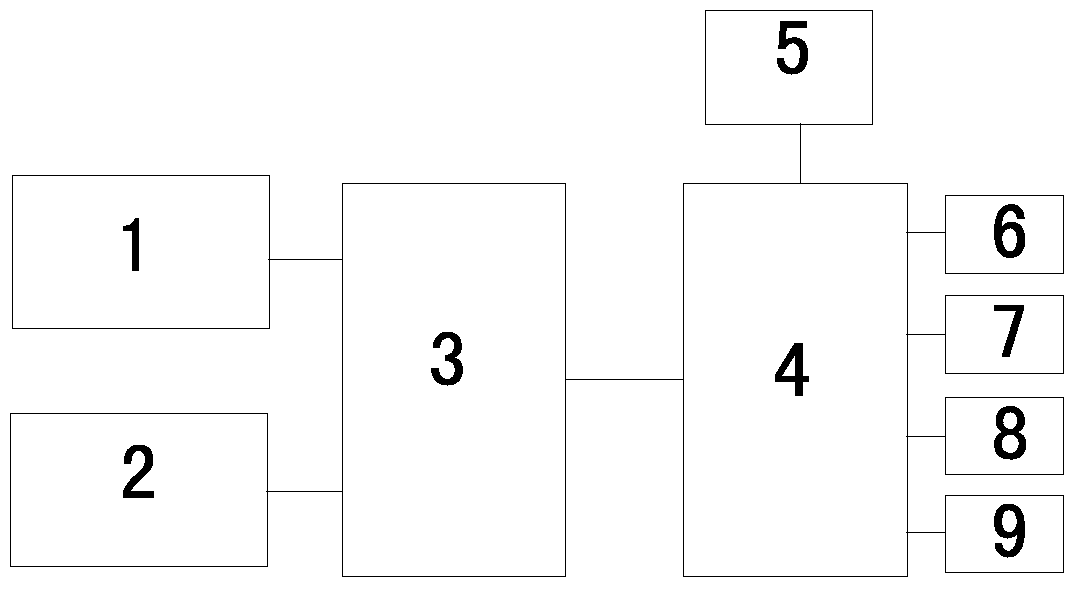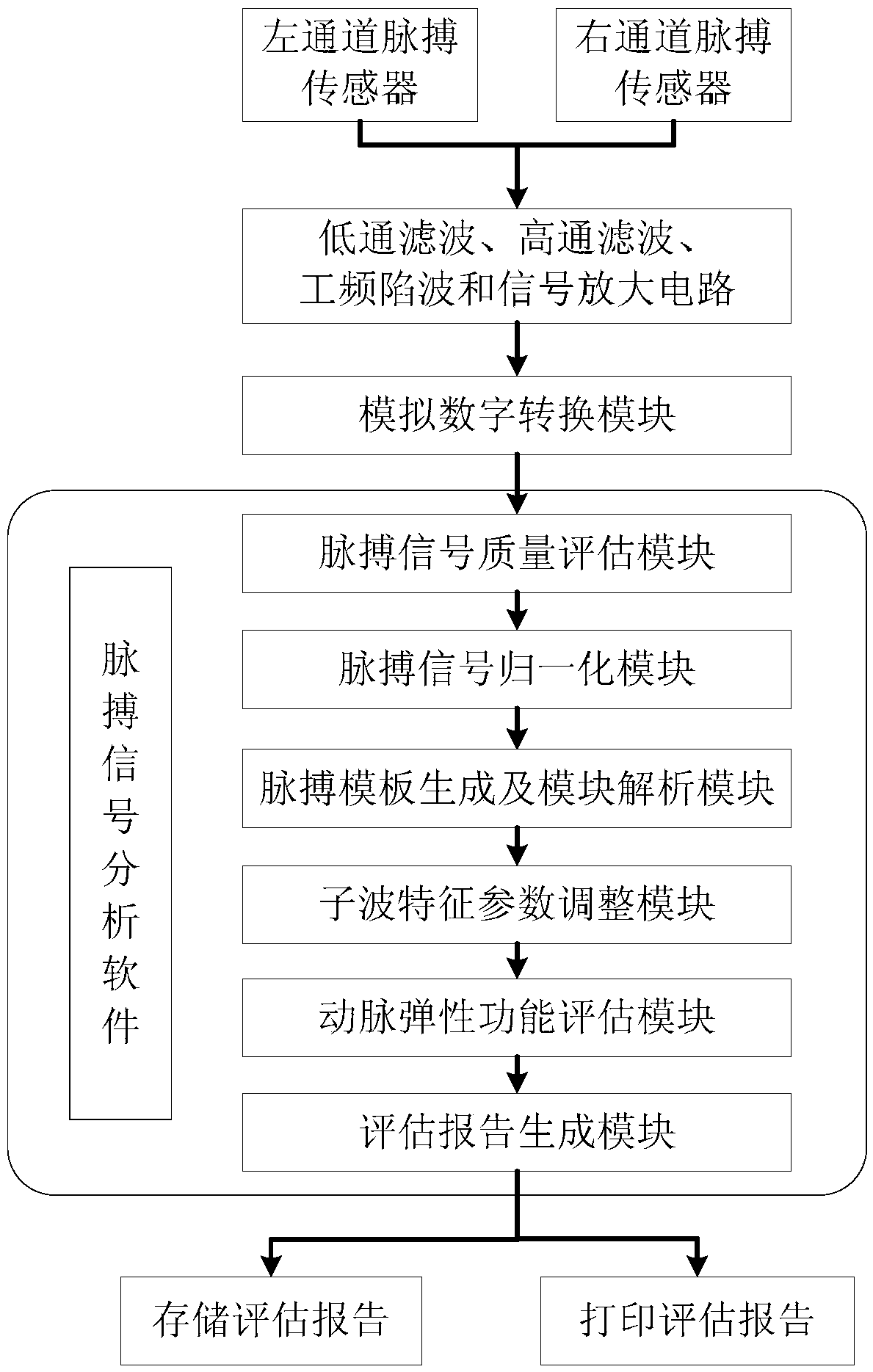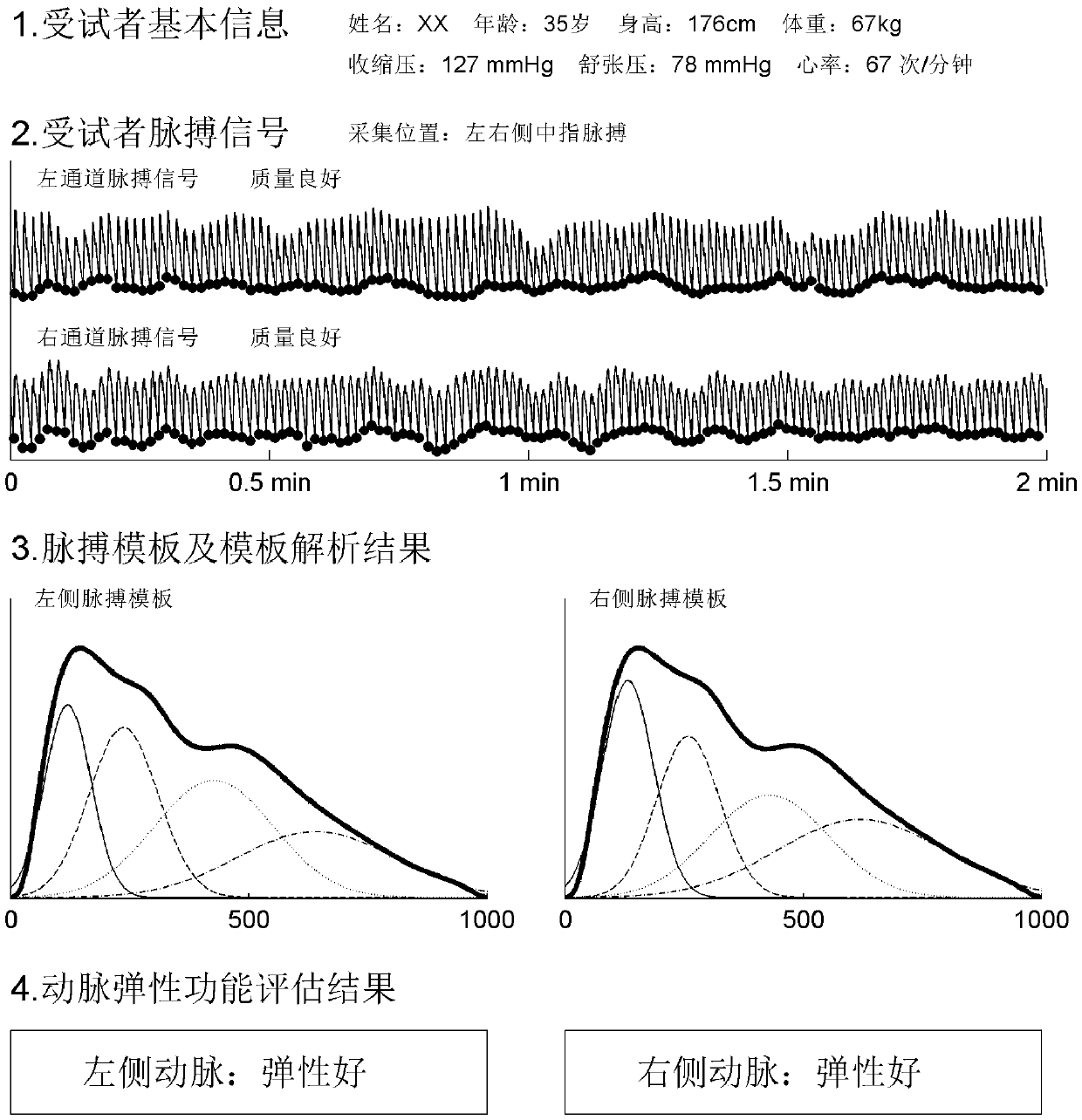A device for evaluating arterial elasticity function based on pulse analysis
A technology of arterial elasticity and pulse, applied in instruments, catheters, calculations, etc., can solve problems such as susceptibility to noise, large measurement deviation, and high technical and equipment requirements
- Summary
- Abstract
- Description
- Claims
- Application Information
AI Technical Summary
Problems solved by technology
Method used
Image
Examples
Embodiment Construction
[0047] Such as figure 1 As shown, the pulse analysis-based arterial elasticity function evaluation device of the present invention includes a left-channel pulse signal detection module 1 , a right-channel pulse signal detection module 2 , an analog-to-digital conversion module 3 , a computer 4 and a data storage card 5 . The pulse signal detection module 1 of the left channel and the pulse signal detection module 2 of the right channel are both connected to the analog-to-digital conversion module 3, which are respectively used to collect the left and right pulse signals of the subject, and complete the filtering, denoising and amplification of the signals . The left channel pulse signal detection module 1 and the right channel pulse signal detection module 2 have the same structure, and both include a pulse sensor, a low-pass filter, a high-pass filter and a signal amplification circuit connected in sequence; Filter, high-pass filter and signal amplification circuit complete ...
PUM
 Login to View More
Login to View More Abstract
Description
Claims
Application Information
 Login to View More
Login to View More - R&D
- Intellectual Property
- Life Sciences
- Materials
- Tech Scout
- Unparalleled Data Quality
- Higher Quality Content
- 60% Fewer Hallucinations
Browse by: Latest US Patents, China's latest patents, Technical Efficacy Thesaurus, Application Domain, Technology Topic, Popular Technical Reports.
© 2025 PatSnap. All rights reserved.Legal|Privacy policy|Modern Slavery Act Transparency Statement|Sitemap|About US| Contact US: help@patsnap.com



